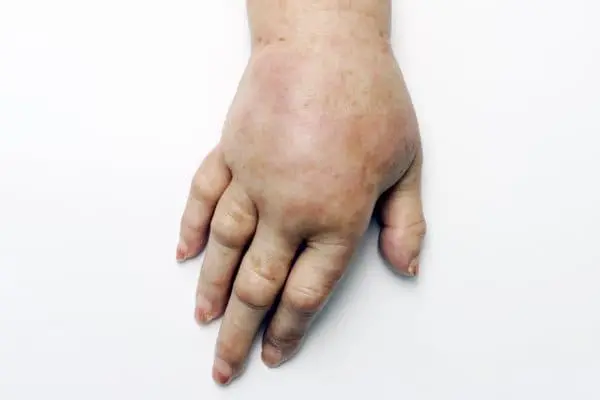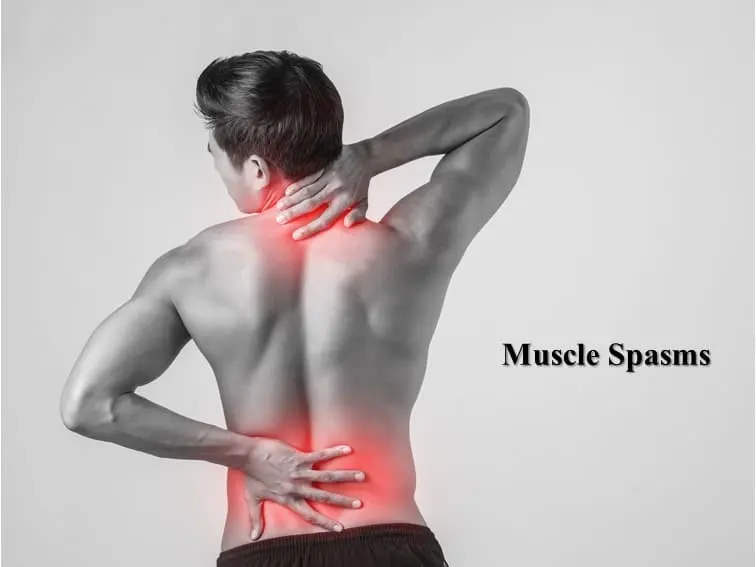Hand Pain with Swelling
What is a Hand Pain with Swelling?
Hand pain with swelling can be a distressing and limiting condition, impacting one’s ability to perform daily tasks and affecting the overall quality of life. There are several reasons why pain and swelling might arise, such as injuries, inflammation, or underlying medical disorders.
Correct diagnosis and efficient treatment of hand pain and swelling depend on an understanding of the underlying causes. The purpose of this introduction is to raise awareness of the importance of this symptomatology, encouraging people to get in touch with doctors as soon as possible and consider suitable treatments to reduce pain and regain optimal hand function.
Causes of Hand Pain with Swelling
There are numerous reasons why one could experience hand pain and swelling, ranging from recent injuries to long-term illnesses.
The common causes are:
- Trauma or Injury: Hand injuries from falls, accidents, or direct strikes can cause pain and swelling. These symptoms are frequently caused by common injuries such as sprains, strains, and fractures.
- Arthritis: Rheumatoid arthritis and osteoarthritis are two diseases that can inflame hand joints, resulting in chronic pain and swelling.
- Tendinitis: Pain and swelling in the hands can be brought on by tendon inflammation, which is frequently brought on by overuse or repetitive actions.
- Carpal Tunnel Syndrome: The thumb, index, and middle fingers in particular may experience swelling, pain, and numbness as a result of compression of the median nerve in the wrist.
- Infections: Localized hand pain and swelling can result from viral or bacterial infections, including cellulitis and septic arthritis.
- Gout: Gout, a form of arthritis brought on by the accumulation of uric acid crystals in the joints, typically affects the fingers and is characterized by sudden, excruciating pain and swelling.
- Ligament injuries: Pain and swelling may result from damage to the ligaments that support the hand joints.
- Ganglion Cysts: cysts filled with fluid that frequently form close to tendons or joints, resulting in pain and swelling.
- Nerve Compression: Hand and finger pain and swelling can be caused by pinched nerves, as in cubital tunnel syndrome or radial tunnel syndrome.
- Systemic Diseases: Hands can get affected by conditions like scleroderma or lupus that cause extensive inflammation.
Symptoms of Hand Pain with Swelling
- Pain: Hand pain that is either severe or persistent and may feel burning, throbbing, piercing, or agonizing.
- Swelling: visible swelling or expansion brought on by fluid buildup in the hand, fingers, or joints.
- Stiffness: Having trouble moving the hand or fingers, frequently with a tightness in the area.
- Warmth: The affected hand may feel warmer than usual because of the inflammation and increased blood flow.
- Redness: The skin in the affected area can appear red or flushed due to inflammation.
- Limited Range of Motion: Having trouble or feeling uncomfortable when using the affected hand for tasks like gripping, grasping, or twisting.
- Numbness or Tingling: tingling or numbness in the hand or fingers, which could be a sign of irritation or compression of the nerves.
- Joint Deformities: Joint deformities brought on by some conditions, such as rheumatoid arthritis, may contribute to pain and swelling over time.
- Weakness: loss of strength or grip strength in the hand that is affected.
- Localized Tenderness: Certain areas of the hand or fingers could feel tender to the touch.
Risk Factor
- Age: As people age, their chance of developing conditions including osteoarthritis and degenerative joint problems continues to rise.
- Gender: Certain diseases, including rheumatoid arthritis, are more common in women than in men, although gout is more common in men.
- Occupational Factors: Hand pain and swelling may be more common in occupations or hobbies that require repeated hand motions, heavy hand tool use, or extended hand strain.
- Trauma or Injury History: People who have had fractures, dislocations, or hand injuries in the past may be more susceptible to ongoing pain and swelling.
- Genetics: An elevated risk may be attributed to a family history of inflammatory diseases or ailments like arthritis.
- Obesity: Being overweight increases the chance of developing conditions like osteoarthritis by putting extra strain on the joints.
- Inflammatory Conditions: People who have a medical history of autoimmune diseases, such as lupus or rheumatoid arthritis, are more likely to have hand pain and swelling.
- Diabetes: Diabetes may increase a person’s risk of nerve damage and circulation problems, which may lead to hand pain and swelling.
- Smoking: There is evidence associating smoking with a higher chance of getting hand-related inflammatory disorders.
- Poor Ergonomics: Hand pain and repetitive strain injuries can be caused by improper hand placement during work or other activities.
- Medical Conditions: Hand pain and swelling can occasionally be a symptom of underlying medical conditions such as metabolic disorders or cardiovascular diseases.
- Gender: Gout is more common in men than in women, but rheumatoid arthritis is more common in women.
Differential Diagnosis
Traumatic Injuries:
- Fractures: trauma-related fractures of the hand or finger bones.
- Sprains: injury to ligaments brought on by severe tearing or stretching.
- Contusions: Soft tissue bruises brought on by blunt force injuries.
- Dislocations: displacement of a bone within a joint from its normal position.
Inflammatory Conditions:
- Rheumatoid Arthritis: a long-term autoimmune condition that results in joint inflammation, especially in the hands.
- Psoriatic Arthritis:psoriasis-related joint inflammation, which might impact the hands.
- Reactive Arthritis: inflammation of the joints brought on by an infection elsewhere in the body.
Infectious Causes:
- Septic Arthritis: Bacterial infections of the joints can result in pain, swelling, and restricted movement.
- Cellulitis: a bacterial infection that can occasionally affect the hands and harm the skin and underlying tissues.
Degenerative Conditions:
- Osteoarthritis: Degenerative joint disease, which typically affects the hands, is defined by a breakdown of joint cartilage.
- Degenerative Disc Disease: Hand pain that is referred to is caused by the intervertebral discs in the cervical spine deteriorating.
- Gout: a kind of arthritis that frequently affects the hands and is characterized by excruciating pain and swelling. It is brought on by the deposition of uric acid crystals in the joints.
- Tendinitis or Tenosynovitis: inflammation brought on by excessive or repeated use of the hand’s tendons or tendon sheaths.
- Carpal Tunnel Syndrome: compression of the median nerve at the wrist, resulting in hand and finger pain, numbness, and weakness.
Vascular Disorders:
- Thrombosis or embolism: Hand Blood clots or blocked arteries resulting in pain and swelling.
- Vasculitis: Hand blood vessel inflammation, which results in decreased blood flow and tissue injury.
Neurological Conditions:
- Peripheral Neuropathy: Hand tingling, pain, and numbness due to injury to the nerves.
- Radiculopathy: compression or irritation of the spinal nerve roots, which results in hand pain that is referred.
Systemic Diseases:
- Lupus: an autoimmune condition that may affect the hands, joints, and skin, among other organs.
- Scleroderma: a long-term connective tissue disease that results in the skin and other tissues, particularly the hands, becoming thicker and harder.
- Tumors or Masses: Growths in the hand or fingers, either benign or malignant, that produce pain and swelling locally.
Diagnosis
- Medical History: The doctor will inquire about the beginning, duration, and features of the hand pain and swelling. They might ask about any recent injuries, things you do to make your symptoms worse, and any related medical history.
- Physical Examination: There will be a comprehensive assessment of the hand, wrist, and fingers to determine the extent of swelling, pain, range of motion, and any abnormalities. Certain joints, ligaments, tendons, and nerves will receive extra care.
- Imaging Studies: To check for arthritis, fractures, dislocations, and other bony abnormalities, X-rays are frequently utilized. An ultrasound or MRI (Magnetic Resonance Imaging) may be requested to assess soft tissue structures such as ligaments, tendons, and nerves.
- Laboratory Tests: To look for indications of infection, inflammation, autoimmune diseases (like lupus or rheumatoid arthritis), or metabolic conditions (like gout), blood tests may be prescribed.
- Joint Aspiration (Arthrocentesis): If an infection or crystal-induced arthritis (such as gout or pseudogout) is suspected, A fluid sample from the affected joint may be taken out for examination.
- Nerve Conduction Studies: Nerve conduction investigations may be carried out to evaluate nerve function and pinpoint areas of impairment if nerve compression or neuropathy is suspected.
- Specialized Testing: Further specialized testing or consultations with experts (e.g., rheumatologists, orthopedic surgeons, or neurologists) may be required, depending on the clinical presentation and suspected diagnosis.
Treatment of Hand Pain with Swelling
- Rest and Immobilization: Inflammation can be decreased and healing can be accelerated by resting the injured hand and avoiding activities that exacerbate the pain. It could be advised to immobilize the hand with braces or splints to stabilize it and stop future injury.
- Ice Therapy: Pain and swelling can be reduced by applying cold packs to the swollen area many times a day for 15 to 20 minutes at a time. To prevent ice burns and direct contact with the skin, it’s important to cover the ice pack with a cloth.
- Elevation: By promoting the removal of extra fluid from the affected area, keeping the hand elevated above the level of the heart can assist in reducing swelling.
- Pain Management: Pain and inflammation can be reduced using over-the-counter painkillers like acetaminophen (Tylenol) or nonsteroidal anti-inflammatory medications (NSAIDs) like ibuprofen (Advil, Motrin). Prescription drugs could occasionally be required for more severe pain.
- Physical Therapy: A physical therapist can offer exercises and methods to strengthen the hand and wrist muscles, increase the range of motion, and encourage recovery. Therapeutic massage or ultrasound are examples of modalities that might be helpful.
- Corticosteroid Injections: Corticosteroid injections may be given directly into the injured joint or tendon to relieve pain and swelling in cases of severe inflammation. For accuracy, these injections are usually made while being guided by ultrasound or fluoroscopic technology. Disease-Modifying Medications: Disease-modifying antirheumatic medications (DMARDs) or biologic agents may be used to treat inflammatory disorders such as psoriatic arthritis or rheumatoid arthritis to inhibit the immune system and reduce inflammation.
- Joint Aspiration: Aspiration, or the removal of fluid from the affected joint, may be necessary to release pressure and reduce swelling if there is a buildup of fluid there.
- Surgery: To repair damaged structures, realign joints, or remove inflamed tissue, surgical intervention may be required in cases of severe injuries, fractures, or disorders that do not respond to conservative treatment.
- Lifestyle Modifications: Managing symptoms and preventing recurrence can be achieved by implementing ergonomic adjustments in daily activities, avoiding repeated motions that aggravate symptoms, and leading a healthy lifestyle with an appropriate diet and regular exercise.
How to Prevent Hand Pain with Swelling?
- Maintain Proper Ergonomics: Make sure that the tools, equipment, and workstations are ergonomically constructed to reduce wrist and hand strain. When engaging in repetitive hand movement exercises, maintain good posture and technique.
- Take Breaks: To prevent overuse injuries and give your hands and wrists a break during repetitive work, take regular pauses. During breaks, include stretches for your hands and wrists.
- Use Protective Gear: When participating in activities that carry a risk of hand injury, such as sports or manual labor, wear the proper protective gear, such as gloves or wrist supports.
- Stay Active and Maintain a Healthy Weight: Frequent exercise preserves the strength, flexibility, and general health of the joints. To lessen the strain on the joints and lower the chance of acquiring diseases like osteoarthritis, maintain a healthy weight.
- Avoid Overuse: Steer clear of using vibrating equipment, handheld electronics, or game controllers excessively as these might cause wrist and hand strain. When necessary, make ergonomic adjustments or use assistive technology.
- Warm-Up and Stretch: To increase flexibility and reduce the chance of injury, warm up your muscles with light stretching exercises before doing any activity requiring repetitive hand motions or heavy hand use.
- Stay Hydrated: Inflammation can be avoided and joint health can be preserved with proper hydration. Water consumption should be sufficient to keep the joints lubricated throughout the day.
- Manage Stress: Hand pain can worsen by stress, which also exacerbates muscle strain. Reduce tension in the hands and wrists by engaging in stress-reduction practices like yoga, meditation, or deep breathing.
- Use Proper Lifting Techniques: Use the right lifting techniques while moving big goods to reduce hand and wrist strain. To lessen the strain on your hands and wrists, lift using your legs and maintain the object close to your body.
- Regular Health Check-ups: See a doctor frequently to check for any underlying medical disorders that could be causing your hand pain or swelling. Complications may be avoided with early diagnosis and treatment of certain disorders.
Conclusion
A common and frequently incapacitating ailment, hand discomfort with swelling can result from several things, such as traumas, inflammation, and underlying medical disorders. It has a major effect on day-to-day activities and life quality. To determine the underlying cause, which may be anything from systemic disorders to traumatic injuries, an accurate diagnosis is crucial. Depending on the exact diagnosis, there are many treatment options, such as medication, physical therapy, rest, and in certain situations, surgery.
Maintaining appropriate ergonomics, preventing overuse, remaining active, and controlling underlying health issues are the key goals of prevention methods. To effectively manage hand pain with swelling and enhance the general health and function of the hand, early intervention, and thorough care are essential.
FAQ
How do you treat swollen hands and pain?
Ice can be used 2 to 4 times a day for up to 20 minutes at a time. Using heat may help ease the pain and stiffness in your hands. Some items, such as wheat bags, can be heated in a microwave and are available from chemists. You may need to cover your skin with a cloth or tea towel to prevent burning.
Why is my hand painful and swollen?
There are more than 197 muscles, joints, bones, and ligaments in the hand. Hand pain and swelling might be brought on by a torn ligament, pulled muscle, broken bone, or tendon damage. Over time, repetitive stress injuries can result from recurring motions, sports, gaming, and other activities requiring repetitive hand motion.
When should I be worried about hand pain?
Action must be taken immediately: If you experience significant hand pain, visit an urgent care facility or an A&E. Feel lightheaded, nauseous, or ill from the discomfort. noticed a popping, grinding, or snapping sound when the accident occurred.
Can hand swelling be serious?
Although painful, hand swelling usually does not result in long-term health problems. It might also point to a hidden medical issue. Hand swelling can be less frequent with easy at-home treatments. A person should see a doctor to rule out any underlying problems if these don’t work.
What illnesses cause hand swelling?
Rheumatoid arthritis, crystal arthropathies, mixed connective tissue disease, nephrogenic systemic fibrosis, systemic sclerosis, and RS3PE syndrome are among the rheumatologic conditions that can result in puffy hands.








One Comment